The more time I spend at the Pima Air & Space Museum, the more I appreciate the thinking behind what they put on display there. Most air museums (and many municipal parks) will have an old Lockheed T-33 trainer on display. PASM goes deep with examples of every variant, from the single-seat P-80 Shooting Star fighter to the T-33 two-seater (also called the Shooting Star, but more often the T-Bird) used to train generations of pilots for the Air Force, Marines, and Navy, including the carrier-capable Seastar.
If you know what you’re looking for, you can find a T-33 that played a Soviet fighter in a John Wayne movie, along with some subtle surprises most visitors probably wouldn’t notice, but which true aficionados will savor: an Air Force T-Bird carrying a travel pod, the tail hook on the Navy Seastar, a belly-mounted speed brake in the deployed position, even a trainer with a sting in the form of nose-mounted guns.
Here’s PASM’s full gamut of Shooting Stars, from the original fighter to the Navy’s carrier-capable trainer (all of these images, by the way, link to larger photos on Flickr):
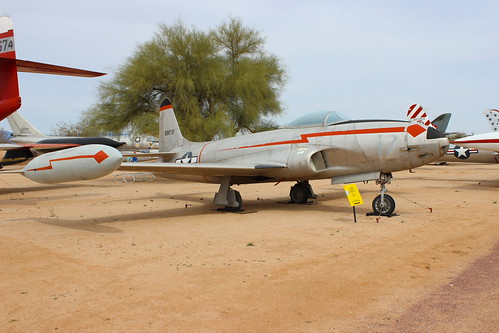
The P-80 (later the F-80) was developed during WWII and became operational in 1945. This one is a 1948 model. I wrote an earlier air-minded post about the P-80, which you can read here.
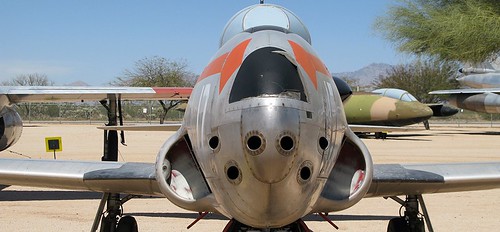
The P-80 fighter was armed with six 0.50-inch M3 Browning machine guns and underwing hard points for bombs or rocket pods.
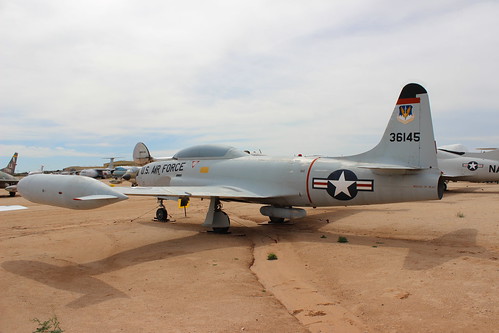
The T-33 version of the Shooting Star had a longer fuselage to accommodate a two-seat tandem cockpit. It was a primary jet trainer during the 1950s and 60s; with the advent of newer trainers it was relegated to support roles and flew on into the early 1980s. The primary user was the US Air Force.
What’s interesting about this aircraft, at least to a detail-oriented geek like me, is that it’s carrying a small travel pod underneath the fuselage. Look close and you’ll see it.

This T-33A, on display inside one of PASM’s hangars, is painted to represent the fictional “Yak-19” Soviet fighter flown in the 1957 John Wayne/Janet Leigh movie Jet Pilot. Other than the paint job, it’s a stock Air Force T-Bird.

As I mentioned in my earlier post on the P-80, the primary instrument flight reference in aircraft cockpits of this era was the turn & slip indicator. If you’re looking for an attitude indicator, don’t bother … there isn’t one!
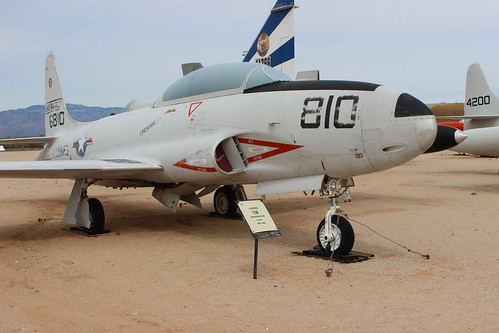
This variant is technically called a TV-2 Shooting Star. TV-2s were used by the Navy and Marine Corps, and were identical to the Air Force’s T-33. They couldn’t be used on aircraft carriers and their role as jet trainers, at least for the Navy, was short-lived.
This display aircraft wears USMC trim. Two details that catch my eye are the speed brake, visible in the extended position just ahead of the main landing gear doors, and the gun ports in the nose. The TV-2s were armed (as were the AT-33 variants used by the Air Force) with two 0.50-inch M3 Browning machine guns and the same underwing hard points used by the P-80 fighter. Many of the T-33s we sold overseas were likewise armed and could be used for combat as well as training.
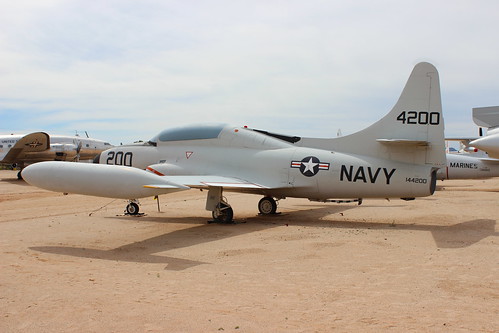
This is the last version of the Shooting Star, built for the Navy and designated the T2V (later the T-1A) Seastar. The Seastar was a stopgap jet trainer meant to address the shortcomings of the earlier TV2: it had a more powerful engine, a raised rear seat for the instructor pilot, extensive modifications to the tail section, and of course a tail hook (visible in the photo) and extendable nose wheel strut for carrier operations. Only about 150 Seastars were built. They entered Navy service in 1957 and were retired in the 1970s, replaced by the Navy’s T-2 Buckeye trainer.
The American military’s T-Birds are all long retired, but many countries around the world still fly them. They may not be glamorous or fast, but they played an important role in the early jet age, and I write this post in tribute.